

SaaS User Activation | The Complete Guide
SaaS User Activation | The Complete Guide

This guide provides a comprehensive overview of SaaS user activation, explaining its importance and how to measure it effectively.
What is user activation? How can you measure it? In what ways does it drive growth for SaaS? How do I increase user activation? Without a doubt, getting users from trial to paid is a challenge all SaaS companies face. So, how can you get users to reach their ‘AHA-moment’ faster? Should you try gamified user onboarding?
To help you get started we created a complete guide on user activation for SaaS companies! In this guide, you’ll discover what user activation actually means, how you can measure it & how it drives growth! You’ll get 15 actionable tactics you can use to (re-)engage both new users, existing users & lapsing users.
This is StriveCloud’s ultimate guide to SaaS user activation:
- User activation fundamentals
- What is the activation funnel?
- How do I increase user activation?
- 15 ways to increase user activation for your SaaS product
- The bottom line of user activation in SaaS
- FAQ
User activation fundamentals
What is user activation in SaaS?
User activation is a metric that indicates how a user engages with a product. Usually, it refers to a certain series of tasks or actions during onboarding that indicates an initial level of user engagement. In SaaS, user activation focuses on the conversion from trial to paid user. However, less than 25% of free trial users eventually go premium.
How to measure user activation in SaaS?
To measure user activation you need to first define the goals, steps, or actions you want your user to complete. In SaaS, this could be upgrading to premium, or simply completing the user onboarding process. You can calculate the user activation rate by dividing the number of activated users by the total number of registered users and then multiplying it by 100.
What is user activation rate?
Activation rate = Activated users / Total registered users * 100
To be sure, user activation is a powerful metric to indicate how healthy your business is. Higher activation means higher customer lifetime value! But where do you draw the line - at what point is a user considered activated?
How to effectively map user activation events? (The 3 key milestones)
When user activation takes place varies from product to product, but activation events are generally linked to your software’s key tasks. In reality, this is useful, trackable data such as how many users complete profile set-up or perform a certain important task.
However, while your map of activation events is unique to you, it will always follow the three key milestones on the customer journey to user activation:
#1 The Aha moment (or perception of product value)
Before users can personally feel your product value, they first need to know what that value is! In psychological terms, this is called priming, which is when one stimulus influences the reaction to another. In short, show off your value during user onboarding, and users will stay loyal for longer!
#2 Finding gold (experiencing the product value)
The first thing new users do is learn how your product works. Your job here is to provide a great and valuable experience because after this step users will subconsciously evaluate whether their expectations were met. This is a make-or-break moment for continued user engagement!
#3 And finally, adopting the product
This is where you hook your users! When users come this far, you know they are more likely to respond to your engagement strategies. For example, a gamified SaaS might use points or challenges to introduce already engaged users to new features.
What is the impact of user activation on product growth?
Activation is the prerequisite for all user engagement! Show users your product value early, and you will activate them before they can churn. In short, that means growth! Indeed, a 25% rise in user activation results in a 34% jump in monthly revenue.

This graph illustrates the direct correlation between increased user activation and a significant rise in Monthly Recurring Revenue (MRR).
What is the activation funnel?
User lifecycle funnels are a helpful way to visualize your strategy. The framework guides you by identifying key milestones along the customer journey both from the business and the user perspective. In short, it reflects your vision of how to turn new customers into activated users!
What is the activation stage?
The activation stage comes directly after acquisition. You must show new users how you will solve their problems - in short, keeping the promises made during acquisition! For a typical Saas business, the activation stage follows some measurable and important steps:
- Requested a demo
- Received a demo
- Started free trial
- Converted to a paid customer
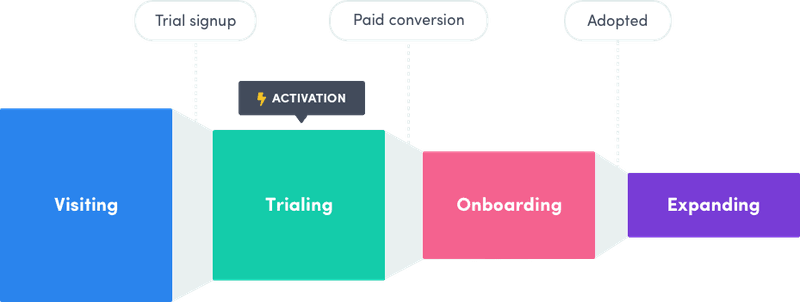
The activation and onboarding funnel visually breaks down the user journey from initial signup to becoming a fully engaged customer.
User activation for growth marketers
How do I increase user activation? For growth marketers, the activation stage represents two challenges. Firstly, how to successfully scale user onboarding. And secondly, how to activate abandoners and disengaged users. However, both cases require their own strategy!
Growth marketers optimizing for activation should know which early customer touchpoints to leverage. A gamified SaaS for instance might use a badge reward system or personalized push notifications. Experiment with these user interactions, and you can impact conversion rates - directly increasing user activation and growth.
How do I increase user activation?
Achieving higher levels of user activation takes more than effort - you need a strategy. Here the activation funnel becomes incredibly useful. Of course, having a plan that defines when and how to engage users is the difference between user engagement and churn!
Set clear goals for your activation strategy in 5 steps
Certainly, one of the tricks of an activation strategy is to facilitate - not force - a genuine and organic Aha moment that the user feels they reached on their own. To achieve that, you need a clear user onboarding process.
Think about:
- User personas. Who your users are will define their journey.
- A journey map. What does your average lead do, feel, and think at each stage?
- User engagement strategy. Time to pick your tactics, based on informed data. Choose where to implement gamified SaaS features, and how to make them unique!
- The key metrics. Know your activation, churn, and cost-per-acquisition rates.
- Push for premium. For SaaS, a conversion may mean a one-to-one meeting. To succeed, personalize and come prepared with the user’s pains and gains!
What is a good activation rate benchmark?
Currently, the top product-led growth SaaS companies enjoy a respectable activation rate of 40% for free trial users. Still, that means 6 in 10 users churn! For the moment, however, this benchmark is the one to beat. How can you increase user activation to match this?
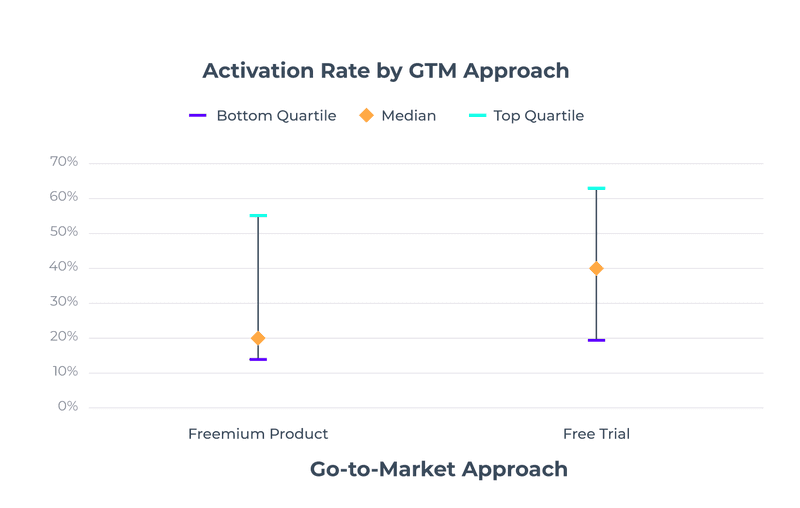
This graph shows the activation rate benchmark for top SaaS companies, highlighting the goal that growing companies should aim for.
15 ways to increase user activation for your SaaS product
Top 5 activation techniques for new users
#1 Welcome emails can create the Aha moment
When you send a welcome email with the user’s name, you personalize the user journey. This gives the customer an instant sense of ownership over the product! Moreover, welcome emails are another chance to promote your customer value. Don’t waste it!
Take SurveyMonkey for instance! They jumped straight into their customer value. Instead of a standard boring ‘Welcome to’ message, their first email asks “ready to get answers to your questions?” After all, that’s why users sign up, right?
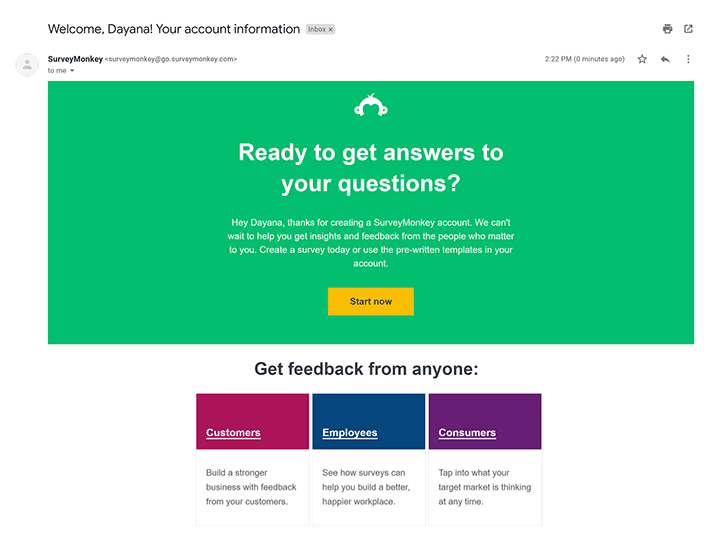
SurveyMonkey's welcome email is a great example of personalizing the onboarding experience to immediately demonstrate product value.
#2 Improve user onboarding through progress bars
A gamified SaaS might incentivize people who complete user onboarding with a progress bar. As the bar fills up, users receive both instant feedback and an indication of how long is left. This is crucial to avoid user frustration & boredom- a perceived longer onboarding means higher churn!
To see how to implement a progress bar like a pro, look no further than the productivity software Trello. Trello links the progress bar with unfinished tasks, thus leveraging the ‘Zeigarnik effect’. This effect says that incomplete tasks are more memorable than completed ones. In doing this, Trello makes completing onboarding irresistible!
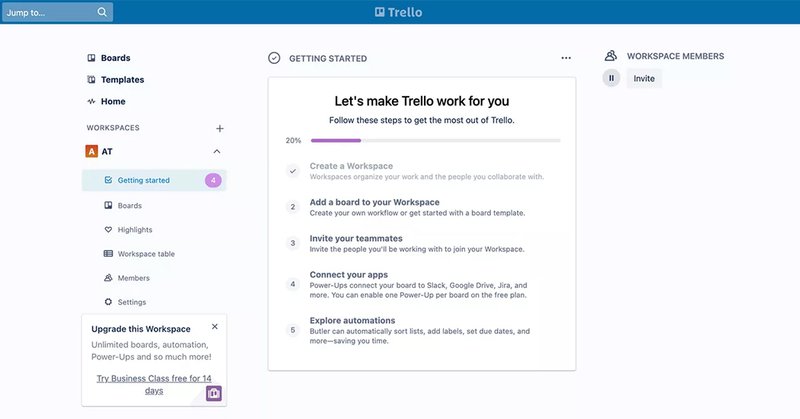
This screenshot of Trello shows how a well-designed progress bar can gamify user onboarding and encourage task completion.
Create a gamified experience to drive user activation? Build your own gamification strategy during a tried & tested workshop!
#3 Personalize the onboarding user experience
Take advantage of the user personas you’ve developed and personalize your user onboarding. When you segment your users, you can customize the onboarding to fulfill their unique expectations - as well as provide that crucial glimpse of your product value.
Let’s look at HubSpot for example. Even though they have a complex product their onboarding begins with a quick survey asking users about their specific needs and industry. These short, simple questions - none of them personal - can form the basis of your personalization strategy.
#4 Delay asking for user registration
Pushing for a full registration before the customer explores your platform is sure to lower user activation. Until you activate your newly acquired user, they are just a visitor! So let them discover your platform before you request they register.
There’s no clear answer on when to ask - that’s why you need to experiment and see what works best for you. Graphics creation software Snappa for instance found out that simply delaying email confirmations resulted in 20% monthly revenue growth!
#5 Tooltips, not tutorials
Optimize onboarding by skipping tutorials and product tours. Instead, show sporadic tooltips with quick hints at the exact time that the user needs them. Now that’s customer value! Tooltips are an easy way to create a platform that is responsive and personalized.
Take inspiration from business messaging software Respond. Their tooltips nudge new users to add their first channel. First, they show how the platform works. Then, they specifically explain how the platform can benefit them. As a result, users immediately get to the AHA moment for their specific use case.
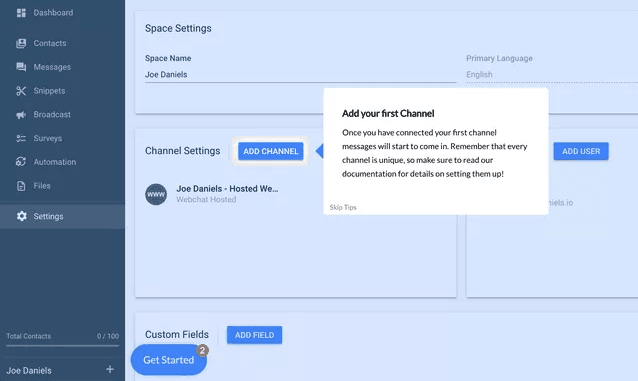
Respond.io uses contextual tooltips to guide new users, demonstrating a key method for seamless, gamified onboarding.
Top 5 activation techniques for existing users
#1 Send emails to introduce new features
Once you learn a platform, it’s easy to settle into a routine. Keep that routine fresh by sending emails about new features, getting users excited again to discover your increasing product’s value.
Video hosting platform Wistia for instance showed off their new video player with a clear call to action that takes people to explore the new feature. Simple and frictionless!

This email from Wistia effectively announces a new feature, providing a clear call-to-action to re-engage existing users.
#2 Give users the chance to extend their free trial
Activate your existing trial users with this simple feature! Offering a free trial extension highlights your most engaged users, allowing you to better target your marketing. This can boost your cost-per-acquisition rates and make user activation more effective.
Improve things further with a gamified approach! Management software Prodpad rewards users with extensions by asking them to complete tasks, such as setting up their profile or even referring another user. With this feature, Prodpad tripled its conversion rate!
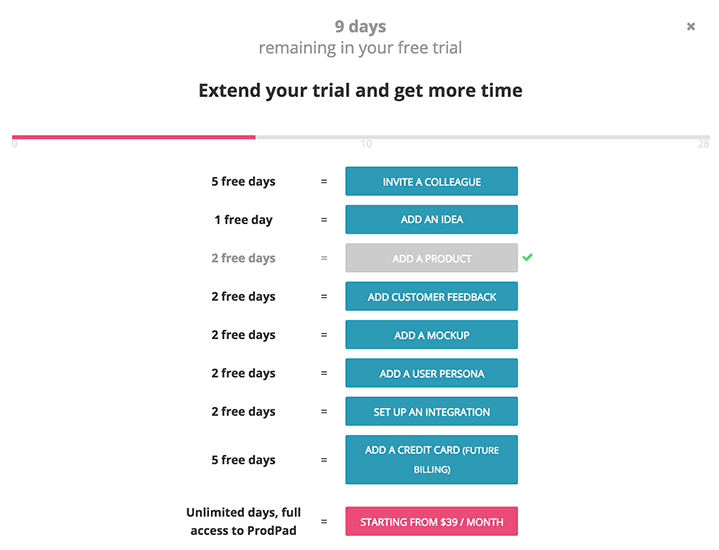
Prodpad’s strategy of offering trial extensions for completing tasks is a powerful example of gamified onboarding in SaaS.
#3 Timed challenges and digital rewards can increase user engagement
Gamified features incentivize user engagement, edging them closer to activation. Take timed challenges and digital rewards for instance! They are both fun and provide an intrinsically motivating reason to use your platform. What is intrinsic motivation? Essentially, users will engage because they enjoy it!
Salesforce gave their users bronze, silver, and gold 10-12 week challenges to incentivize learning the product’s features. Additionally, to reward engaged users, they received badges and levels. This gamified approach led to an increase in user logins of over 34%!
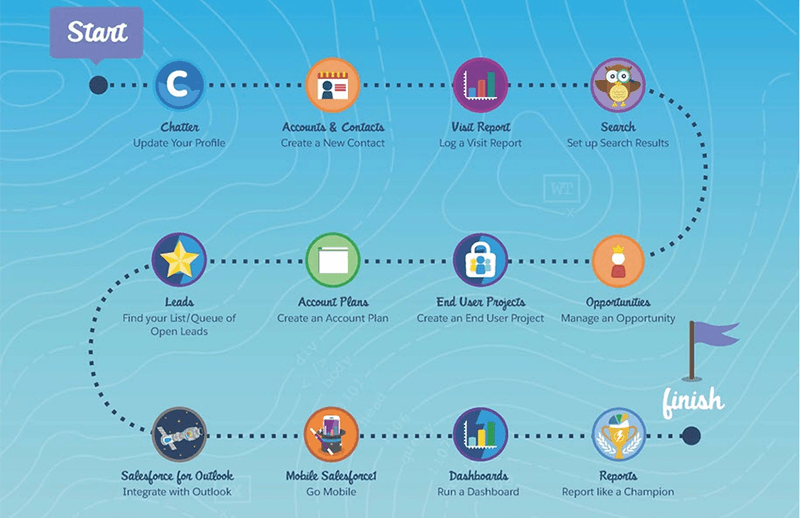
This example from Salesforce illustrates how timed challenges and badges can be used to drive gamified activation and feature adoption.
Building a gamified experience has never been easier - Check out our gamification software & find everything you need in 1 solution!
#4 Start an in-app community
Social relatedness is consistently one of the most powerful motivations available. A community can by themselves create support networks like those on forums where questions get answered, or even just a place for users to brag about their achievements. Additionally, we’ve seen many gamification examples that leverage their community to drive engagement.
Support software Freshdesk for instance gamified its community with a leaderboard. It creates competition and fosters interpersonal relationships between colleagues. Also, it makes user engagement worthwhile!
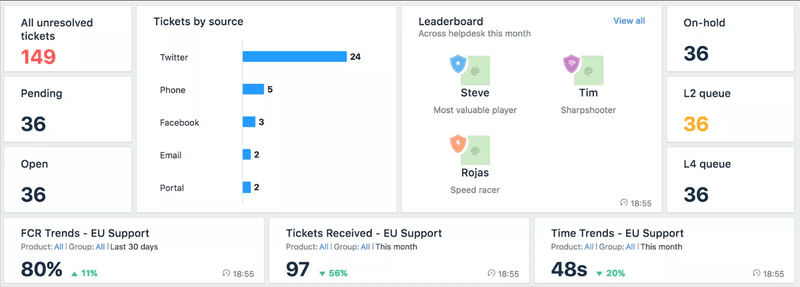
The Freshdesk leaderboard is a prime example of using gamification and community features to boost engagement within a SaaS product.
#5 Leverage the network effect and create sustainable growth
SaaS companies are uniquely scalable. Combine this with the ‘network effect’ and you’ll unlock sustainable growth! In brief, the network effect says that a product becomes more useful the more users sign up. To achieve this, incentivize referrals and implement social features.
Messaging software Slack went from $0 to $7 billion in under five years by doing this! Right away, Slack asks new users to invite team members, and they facilitate this with one-click links and unique user URLs that can be shared anywhere. These types of viral growth hacks are also seen in lots of gamification examples where they add fuel to the fire with rewards like badges, experience points or milestone unlocks!
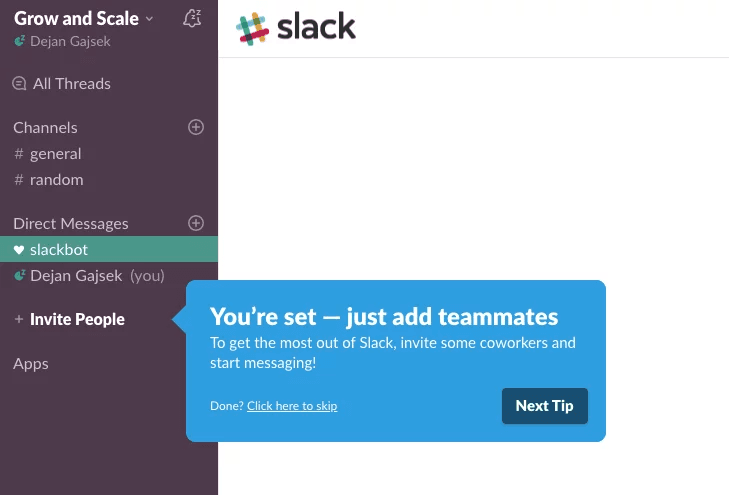
Slack effectively leverages the network effect by prompting users to invite their team, a key strategy for viral growth and gamified onboarding.
Top 5 activation techniques for unengaged users
#1 Retargeting emails with social proof go a long way
Adding social proof to your re-engagement campaign is a clever user activation technique. In essence, testimonials work so well because peer reviews build trust and credibility. Social proof can be gathered from user feedback and even personalized to the user’s segment!
#2 Give users an incentive to return
Try offering disengaged users a free week of premium. This encourages them to give your platform a second chance. Targeting lapsed users is in fact one of the best growth strategies - reengaged users spend 37% more often than new users!
For example, Flow lets users experience their project management tools by making it easy to extend the free trial, and they do it with a personable copy to boot.
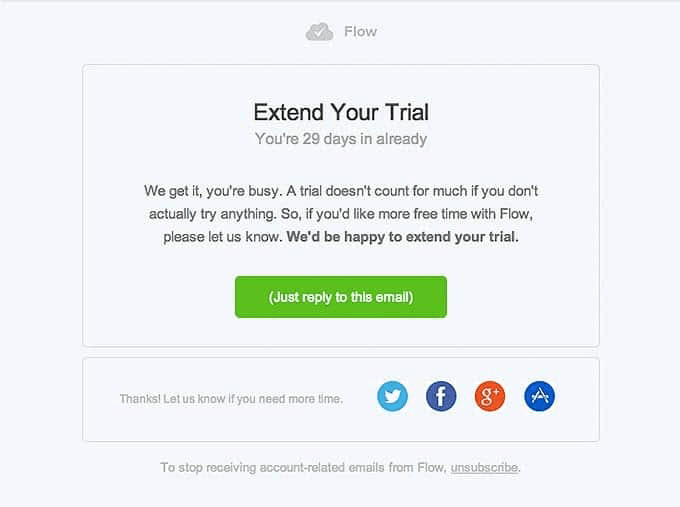
This image demonstrates how offering a trial extension can be a simple yet powerful way to increase user activation and re-engage lapsed users.
#3 Live chats can stop users from quitting
Only 14% of SaaS products offer a live chat. That’s a huge problem! Live chats keep users in-app and satisfied, driving user activation and not frustration. In fact, live chats have the highest customer satisfaction rate of 82%, more than any other channel. What’s your excuse?
#4 Catch lapsing users with social media
While some users might be disengaging with your product, nearly 7 out of 10 minutes on mobile are spent on social media! Take advantage of this by reengaging lapsed users on social media, where you are most likely to reach them.
#5 A gamified loyalty system promotes user retention
Stop users from churning in the first place with a gamified loyalty system. Users today expect to be rewarded for their loyalty - the so-called Lucky Loyalty Effect - and actually feel more entitled to prizes and gifts than customers who are not loyal.
To be sure, a lapsed user has less reason to churn for good if they have built up perks & invested lots of time in setting up their profile. It creates a sense of loss prevention which will make users less likely to switch.
The bottom line of user activation in SaaS
Optimizing user activation has been shown to give you the biggest bang for your buck. Even more than retention or loyalty, activation is the most essential step in the customer journey. Without being activated, users will churn before they can even engage!
To sum up activation, you need to get users from acquisition to learning about your product value, experiencing it, and finally turn it into a habit. Certainly, it is an enormous task - and it is the SaaS companies with the ambition to experiment who will discover the next best way to increase user activation! Will it be you?
Kickstart your own activation strategy with a custom workshop & go home with an actionable roadmap!
FAQ - How do I increase user activation?
What is user activation in SaaS?
User activation is a metric that indicates how a user engages with a product. Usually, it refers to a certain series of tasks or actions during onboarding that indicates an initial level of user engagement. In SaaS, user activation focuses on the conversion from trial to paid user. However, less than 25% of free trial users eventually go premium.
How does user activation create product growth?
User activation is the prerequisite for all user engagement! Show users your product value early, and you will keep them engaged for longer. In short, that means growth! Indeed, a 25% rise in activation results in a 34% jump in monthly revenue.
What is user activation rate?
User activation rate is a metric that indicates what percentage of users actually activate. You can calculate this by dividing the number of activated users by those who signed up and then multiplying it by 100.
How to create a user activation strategy?
There are five steps to building a user activation strategy. Firstly, you need user personas. Those will define the customer journey. Then you develop a user engagement strategy, supported by metrics like activation & user engagement rate. Finally, you experiment with tactics like gamified user onboarding to drive users from trial to premium!
Related Posts
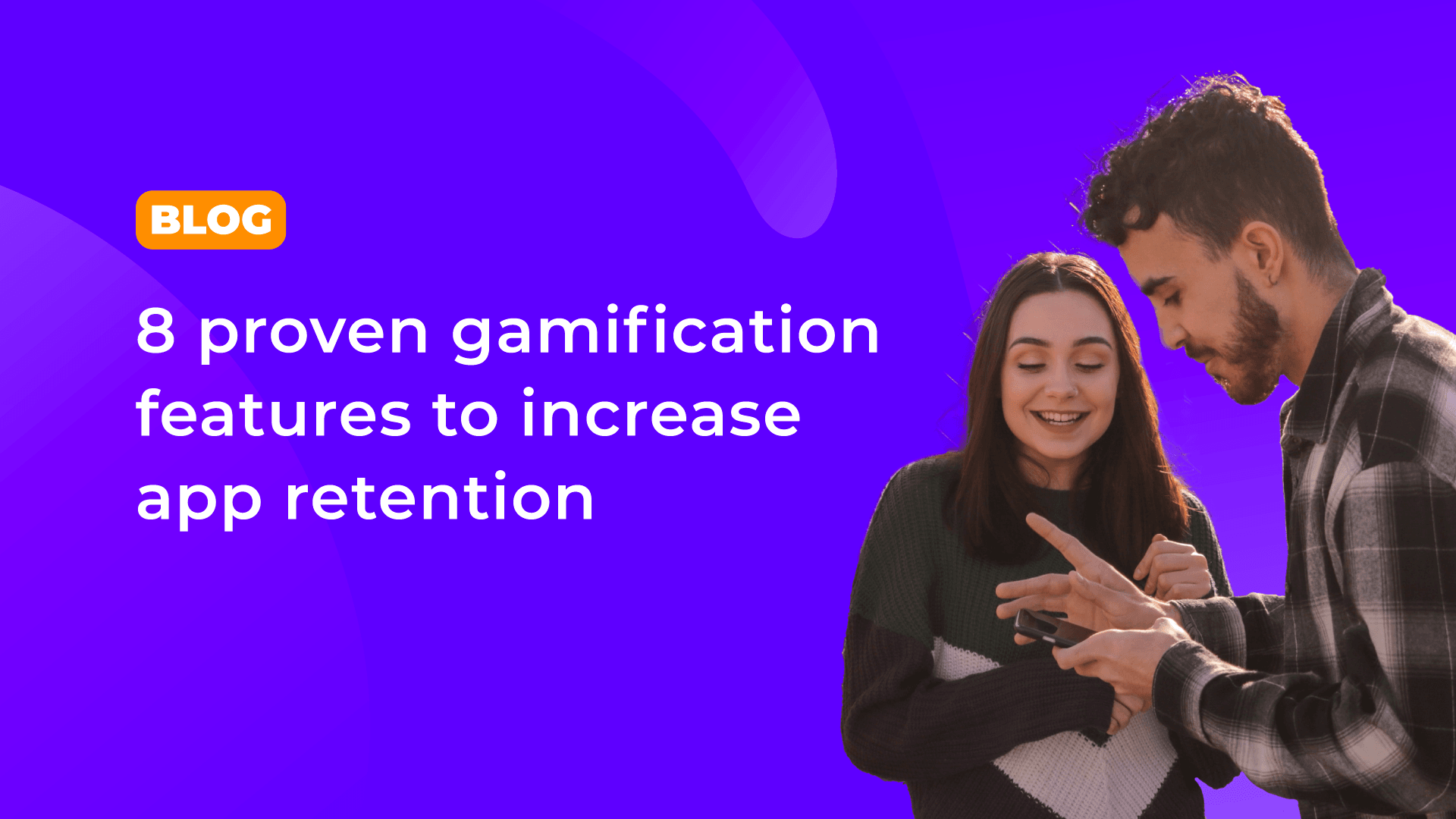
How to increase app retention? Use these 8 proven gamification features!
How do you increase mobile app retention? The answer is a great user experience! 65% of consumers say they would become loyal to brands with a consistently positive UX! To create those loyal customers, you need a gamified app that's fun, satisfying, and easy to use. Here's how to get started!
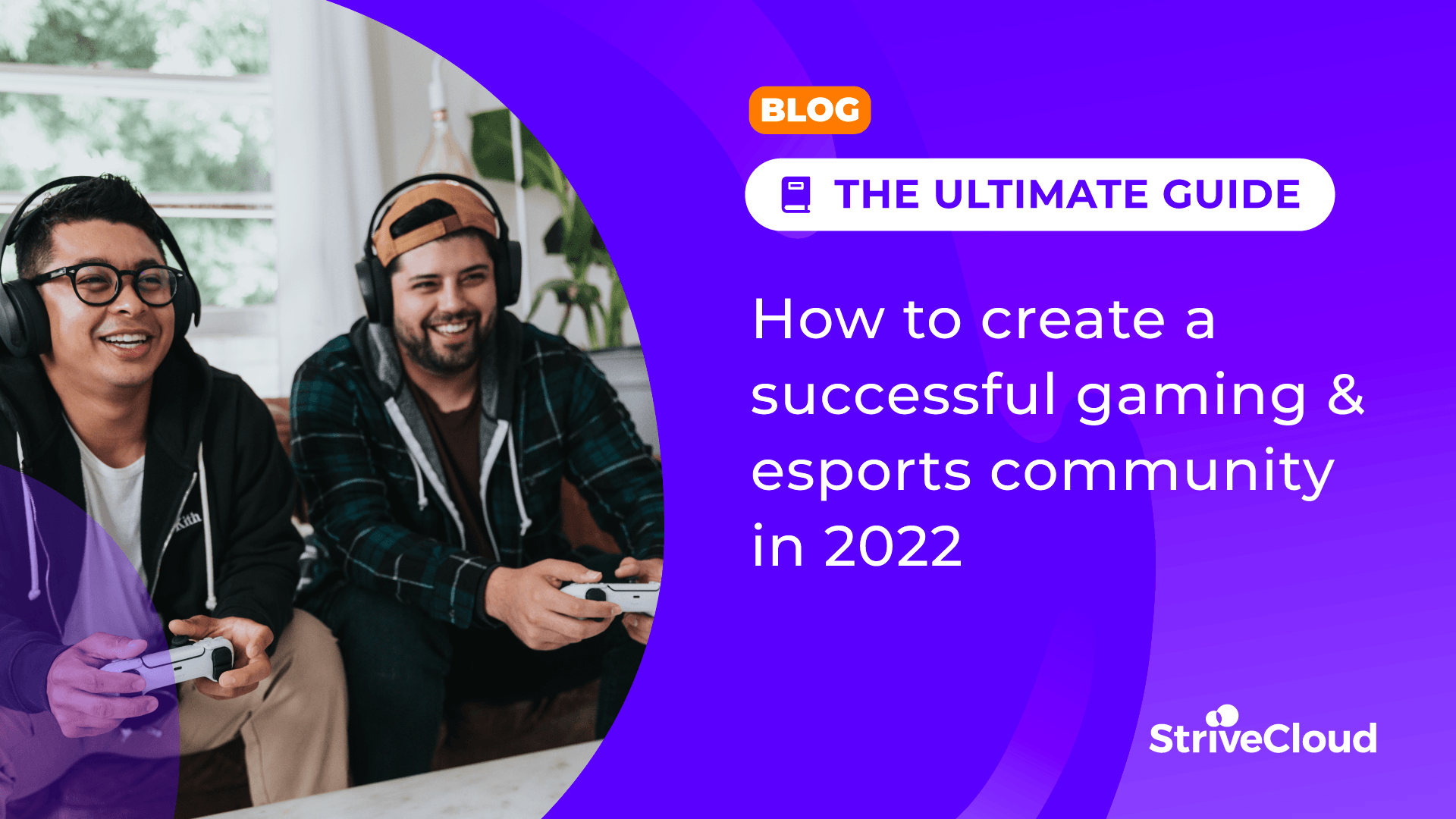
How to build a successful gaming and esports community in 2022: The definitive guide
Gaming and esports communities are rapidly growing among the seemingly “unreachable” target audience of digital natives. In this guide, we’ll show you everything you need to know to build, grow and monetize your own esports and gaming community.

